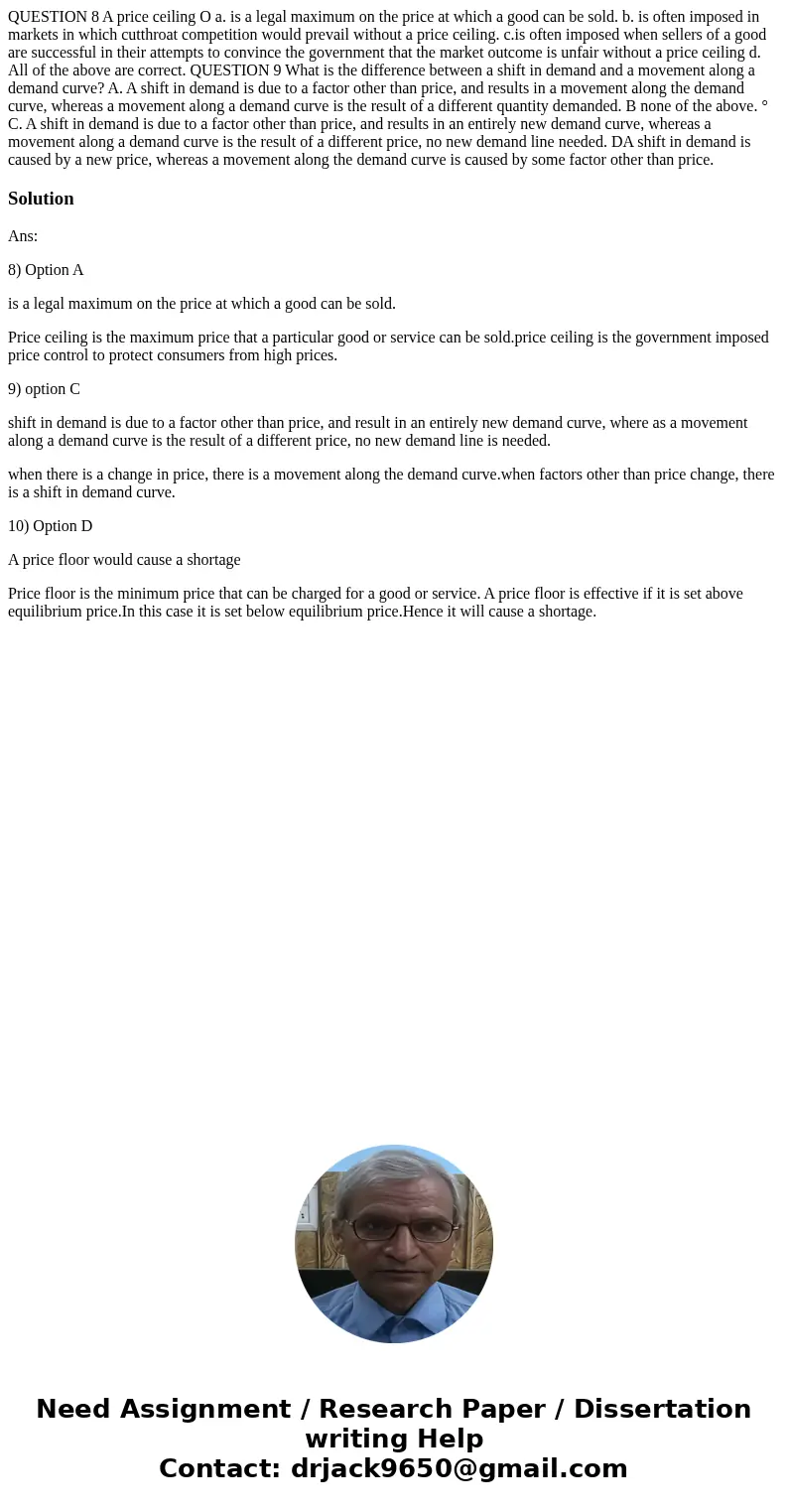QUESTION 8 A price ceiling O a. is a legal maximum on the price at which a good can be sold. b. is often imposed in markets in which cutthroat competition would prevail without a price ceiling. c.is often imposed when sellers of a good are successful in their attempts to convince the government that the market outcome is unfair without a price ceiling d. All of the above are correct. QUESTION 9 What is the difference between a shift in demand and a movement along a demand curve? A. A shift in demand is due to a factor other than price, and results in a movement along the demand curve, whereas a movement along a demand curve is the result of a different quantity demanded. B none of the above. ° C. A shift in demand is due to a factor other than price, and results in an entirely new demand curve, whereas a movement along a demand curve is the result of a different price, no new demand line needed. DA shift in demand is caused by a new price, whereas a movement along the demand curve is caused by some factor other than price.
Ans:
8) Option A
is a legal maximum on the price at which a good can be sold.
Price ceiling is the maximum price that a particular good or service can be sold.price ceiling is the government imposed price control to protect consumers from high prices.
9) option C
shift in demand is due to a factor other than price, and result in an entirely new demand curve, where as a movement along a demand curve is the result of a different price, no new demand line is needed.
when there is a change in price, there is a movement along the demand curve.when factors other than price change, there is a shift in demand curve.
10) Option D
A price floor would cause a shortage
Price floor is the minimum price that can be charged for a good or service. A price floor is effective if it is set above equilibrium price.In this case it is set below equilibrium price.Hence it will cause a shortage.

 Homework Sourse
Homework Sourse